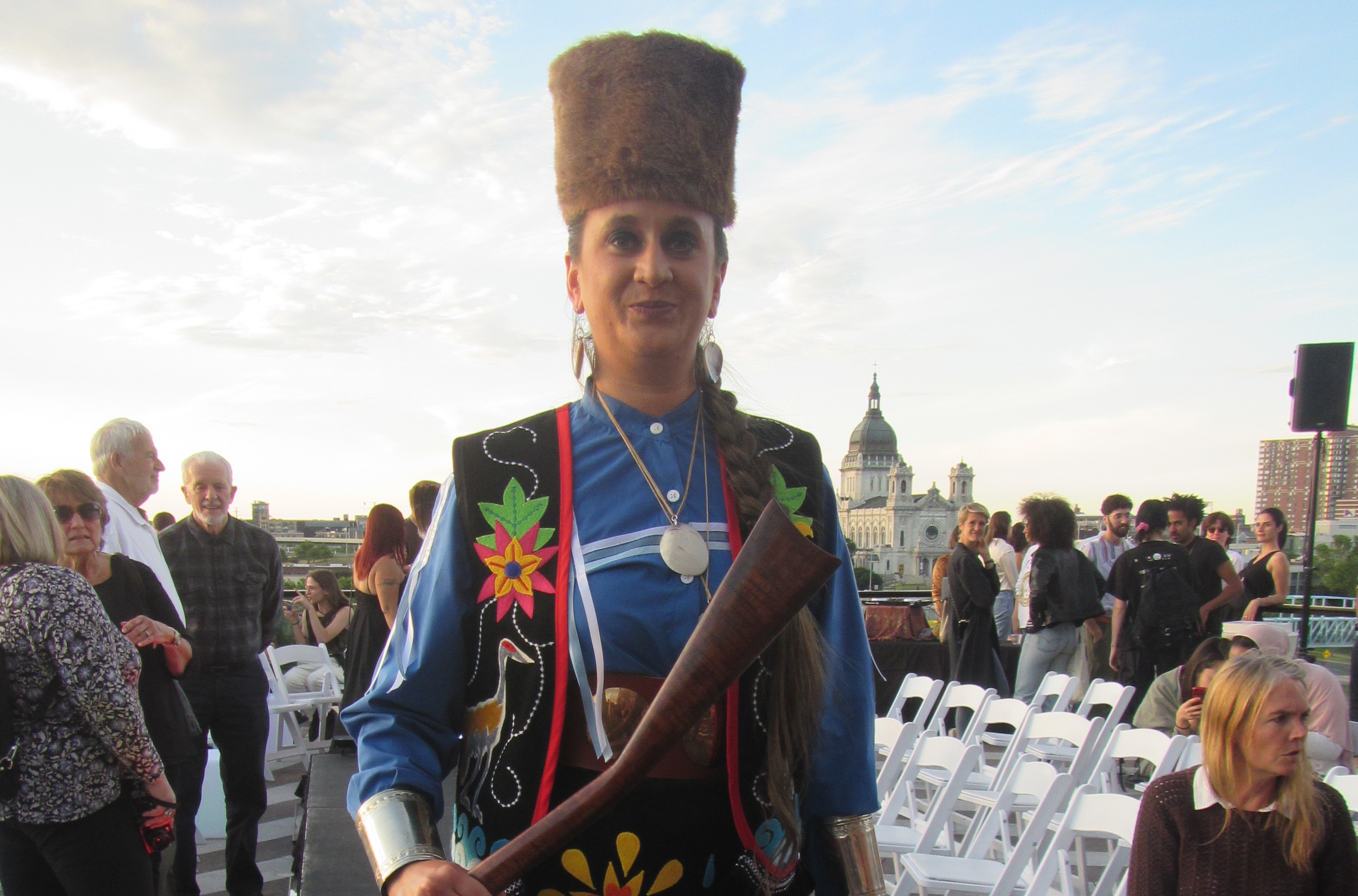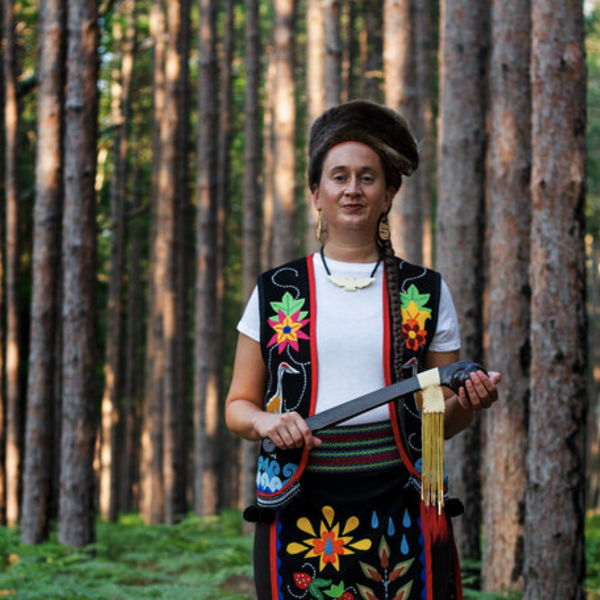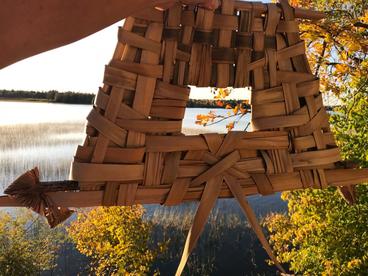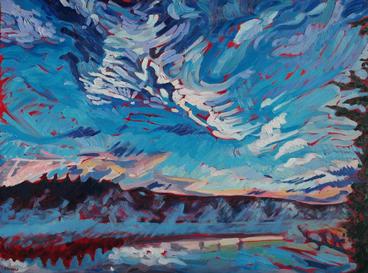
FEATURED ESSAY
Anishinaabe culture, heritage, and traditions are rich. Decolonization is more than a hashtag and is very hard work. Restoring balance in our Anishinaabe communities is much more than returning to traditional male and female roles. All of this work, restoration, and decolonization is connected to our culture which is connected to our traditional homelands. Leadership is connected to our land and water. We live in a beautiful time where, despite great oppression, systemic injustice, racism, stereotypical mascots, and discrimination, we are resisting and thriving.
When we restore traditional culture we are restoring our nation. And in restoring the Anishinaabe Nation we reclaim and decolonize. This is why everyday existence is resistance—any action we can take to reclaim who we are restores our people and communities.
Anishinaabe leadership is being restored in our territory. Traditional Anishinaabe leadership is based on the individual, family, and community. The community includes various clans based on families. All clan relations are honored and within these relations there is no hierarchy—all clan roles and responsibilities are considered equally important. There are seven original clans which include: crane, loon, bear, fish, marten, deer, and bird. Clans vary across our territory and there are many other clans outside of these seven. Cranes and loons are leaders but play different roles. Crane clan are speakers for the community and work to negotiate with other tribes and bands, while loon clan members are leaders within the community. The bear clan are protectors for their communities and also are responsible to know the plants and medicines for healing within the community. The fish clan is the community philosopher but also an advisor to the leadership clans. The marten clan are strategists, warriors, and builders within the community. The deer clan is responsible for the social aspects of the community including ceremonies and celebrations. Finally, the bird clan is about teaching and spreading knowledge for the people. Leadership is about the community and decolonization is about restoring traditional culture. When we restore traditional culture we are restoring our nation. And in restoring the Anishinaabe Nation we reclaim and decolonize. This is why everyday existence is resistance—any action we can take to reclaim who we are restores our people and communities.
In order to restore balance in the Anishinaabe Nation, decolonization requires honoring Two-Spirits. While there has been more awareness on Two-Spirit identity in the Native community and majority culture, we still have work to do. The term Two-Spirit is a pan-Native American term that came from a Native lesbian and gay international gathering in Winnipeg in 1990. It was chosen to honor LGBTQ+, gender identity, gender expression, and gender variance that has existed in the hundreds of Native communities across the US and Canada prior to colonization (Please note that Two-Spirit identity is not just about sexual orientation—it can also be about gender identity, gender expression, and gender variance). Within the various tribes there are many terms in the hundreds of different languages to describe Two-Spirits. The Anishinaabe Nation has many terms to describe Two-Spirit identity and not every term is known. Through decolonization, we can uncover the various meanings that might not align with the definitions of "lesbian," "gay," "bi-sexual," "transgender," and "queer." Most importantly, this work of decolonization includes reclaiming identities and restoring gender balance within the Anishinaabe Nation.
All of this is connected to our culture which is connected to the land and water—our culture is filled with stories around the water. Women are considered keepers of the water and are given voice in our community to speak for the water. In the past decade, you have seen an increase in an awareness around the water through powerful voices like Josephine Mandamin. In our migration stories we were told to go where the food grows in the water. This sacred food and gift is called manoomin, which translates to "the good berry" or wild rice. Manoomin is part of our traditional foods and is used in feasts and ceremonies. Through environmental racism and injustice, our traditional foods are harmed by extractive industries and resource colonization. Not only do we deal with this ongoing colonization, but attacks such as the Walleye Wars in the late 1980s and 90s in Wisconsin's Anishinaabe communities threatened our right to fish in our own waters. Even to this day, Anishinaabe community members deal with verbal insults and attacks when exercising their treaty rights through hunting, fishing, and gathering (some progress has been made we deal with daily racism). This is why our efforts to live as Anishinaabe are so important. Decolonization is dependent on supporting Native people and our fight for justice so we are not alone in all the injustice that we face.
I don’t like being too far away from any of the Great Lakes. As an Anishinaabe person, I am home. There is nowhere I need to go. The water is healing and the water is my culture.
Visibility and inclusion of the Anishinaabe is crucial to the work of healing and racial justice across Anishinaabe Aki. It is essential that all leadership is included that honors the gender balance that existed in our communities prior to colonization and what can exist in the future.
We never left the land, water, or our culture. We were forced from our land, water, and culture. The strength of the community is a resurgence. This is the work being done on social, healing, and racial justice in our communities in Anishinaabe Aki. This important work covers anything from food justice, learning the Anishinaabe language, treaty rights, repatriation, hunting, fishing, gathering, and increasing our visibility in majority culture intuitions. We are returning and so we reclaim who we were as the Anishinaabe Nation.
I am absolutely in love with the water. When I lived away from Michigan during graduate school I dreamed of the water and the tall trees every week. Recently, when I have traveled out of Anishinaabe Aki for my work, I missed home. I feel the change in the landscape and how the watersheds are different. I don’t like being too far away from any of the Great Lakes. As an Anishinaabe person, I am home. There is nowhere I need to go. The water is healing and the water is my culture.
Join Cecelia LaPointe in conversation at the museum on November 13 at Decolonization of Water Issues from an Anishinaabe Perspective. The talk will be in conversation with Alexis Rockman: The Great Lakes Cycle, and will engage attendees from a perspective that looks outside of territorial lines and colonial maps to understand traditional Anishinaabe women’s role with the water, the legacy of environmental racism, and current water issues in urban areas such as Flint and Native communities.
Cecelia LaPointe
Cecelia is Ojibway/Métis and is Mashkiziibi (Bad River Band of Lake Superior Ojibway or LaPointe Band of Ojibway) and Kchiwiikwedong (Keweenaw Bay Indian Community). They are enrolled in Mashkiziibi and maintain a strong community affiliation to Kchiwiikwedong. Cecelia is the Founder and Owner of Red Circle Consulting, Waub Ajijaak Press and the Native Justice Coalition. They identify as Two-Spirit based in their Ojibway culture from an old school and decolonial framework. Their poetry and writing is featured in 25 anthologies, booklets, chapbooks, dissertations, exhibits, journals, magazines, and online Indigenous-Native publications. You can find more about their work at www.anishinaabekwe.com and www.nativejustice.org



